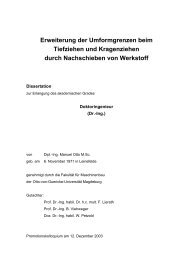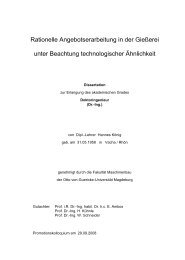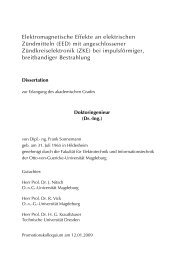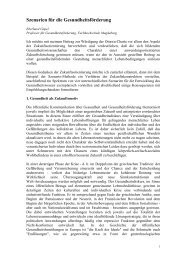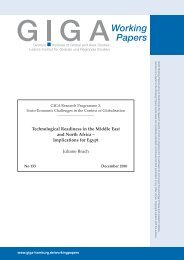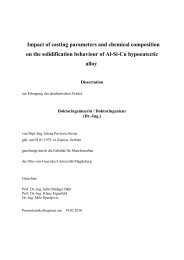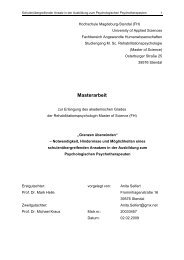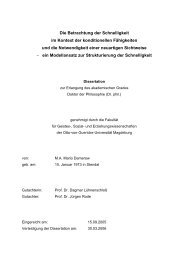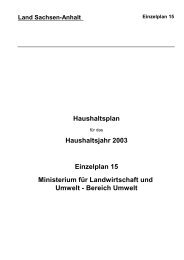Chapter 1
Chapter 1
Chapter 1
Create successful ePaper yourself
Turn your PDF publications into a flip-book with our unique Google optimized e-Paper software.
agroindustries (10 percent). The program came up against ties to the private sector, either because of social concerns or<br />
several obstacles: (1) the limited size of the financial mar- because it is not convinced the private sector can do a better<br />
ket; (2) concems that a few groups, families, or foreigners job, then private and foreign investors will not be convinced<br />
would dominate too much of the economy; and (3) most that the time and conditions are right for investment. Two<br />
important of all, resistance from well-organized unions and recent Bank studies of cross-country experience, Galal and<br />
from management and govemment bureaucrats that bene- others 1994 and Galal and Shirley 1995, assess the political<br />
fit from sitting on the boards of public enterprises. and social complexities of divestiture and measure the<br />
Slowing down the pace of privatization may help to main- impact of PE ownership on an economy's per capita income,<br />
tain stability, but at a cost, because it also slows down the savings, and growth prospects. The findings support the view<br />
pace of new job creation through the establishment of new that there are substantial advantages in terms of efficiency,<br />
and more efficient private investments, and it prolongs the enhanced intemational competitiveness, and long-term<br />
inefficiencies and misuse of scarce resources in the economy. growth of selling public enterprises and supporting divesti-<br />
Most studies, including the Sader privatization study (table ture measures with appropriate competition policies.<br />
2.2), find that weak privatization programs slow down the Since 1991/92, the Government has been preparing secadjustment<br />
process and discourage foreign and local private toral studies, evaluating divestiture options, and identifying<br />
investors. Without clear signals that the system has changed, constraints and opportunities. It has also focused on creatthe<br />
reform process becomes much more tenuous and subject ing the necessary legal environment to regulate the stock<br />
to costly political, social, and economic setbacks. After all, if exchange which will permit them to move forward in a pruthe<br />
goverrment is not ready to relinquish productive activi- dent way for a stronger privatization effort in 1995/96.<br />
TABLE 2.3<br />
Basic infrastructure<br />
(1990 = o00)<br />
1985 1990 1991 1992 1993<br />
Capacity<br />
Roads (kilometers)<br />
Paved<br />
Transport vehicles in service<br />
76 100 100 100 100<br />
Passenger vehicles (units) 100 106 114 125<br />
Cargo vehicles (units)<br />
Electricity generating capacity (megawatts)<br />
100 115 130 ISO<br />
Total<br />
Electricity distribution network (length)<br />
100 100 100 100 100<br />
High Tension 8 1 100 110 110 III<br />
Medium Tension 73 100 107 115 123<br />
Low Tension 67 100 108 118 127<br />
Total 70 100 108 117 125<br />
Potable water network (kilometers) 73 100 104 r/a 133<br />
Telephone lines (lines per I 00 people) 65 100 III 124 135<br />
Utilization (transport by mode)<br />
Road<br />
Passengers (number)<br />
Freight (tons)<br />
Rail<br />
-<br />
-<br />
100<br />
100<br />
105<br />
117<br />
112<br />
136<br />
121<br />
ISO<br />
Passengers (number) - 100 99 107 98<br />
Freight (tons)<br />
Sea<br />
- 100 100 109 109<br />
Passengers (number) _100 89 89 78<br />
Freight (tons)<br />
Air<br />
- 100 88 125 125<br />
Passengers (number) - 100 71 106 123<br />
Freight (tons) - 100 88 125 125<br />
Real GDP 74 100 107 114 119<br />
- Not avlable.<br />
Source: VMdd Bank estmates and SIDES 1995.<br />
RoLE OP THE STATE IN THE ECONOMY 17




